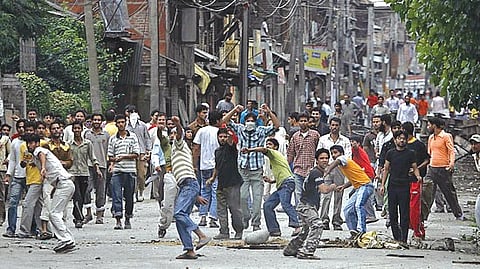

Out beyond ideas of wrongdoing
and right doing there is a field.
I’ll meet you there.
- Rumi
Another year has passed and we observe Gandhi Jayanti, a day earmarked to remind us of the Mahatma’s struggles against different forms of violence and his approach of using non violence as a powerful form of protest. This article reflects on the many forms of violence and what can help address it in the long run.
Often violence takes the physical forms of hitting, beating and slapping. Television, newspapers and our smartphones are filled with breaking news reporting various forms of violence. Screens are filled with images of people with physical injuries and shaking fists screaming verbal threats, and violent acts comprising damaged property, arson and looting.
Workplaces like offices and factories can be a generator of violence and the same applies to schools, colleges and homes. As students we are likely to encounter psychological violence in the form of bullying. These are repeated, offensive acts that can be cruel, humiliating or mean and undermine a person. This can be classified as emotional violence.
Many people are afraid to report such acts fearing dire consequences. Bullying can be hidden as it’s covert and unpredictable. Mobbing is a collective form of violence where continuous negative remarks, gossip or ridicule are directed towards a person. It’s about ganging up on a person and this can be a stigmatising process.
Today, there is a lot of awareness about sexual harassment and rape being a form of gender directed violence. This includes vulgar jokes, physical contact and lewd remarks.
What are the common causes of violence?
From a mental health point of view, violence, anger, rage and hostility affect a person’s physical health. Many of us may have been subjected to some form of violence and some may have inflicted violence on others.
Studies reveal that heart disease, high blood pressure and cholesterol can be the outcome of continuous hostility. The Dalai Lama’s traditional wisdom is consistent with such studies, demonstrating how angry thoughts tend to create a state of psychological arousal that makes a person more prone to anger. In other words, anger builds on anger and keeps escalating. He adds that just giving vent to anger, like a pressure cooker releasing steam, isn’t enough. Instead, only patience and tolerance can sustain and maintain our presence of mind amidst all the tension and stress surrounding us.
So it seems that there is no use in perpetrating violence as it ends up causing unhappiness to the same person (or perpetrator). Saint Rumi’s verse given above seems to reflect on how we cannot escape the wrongdoings of what we create.